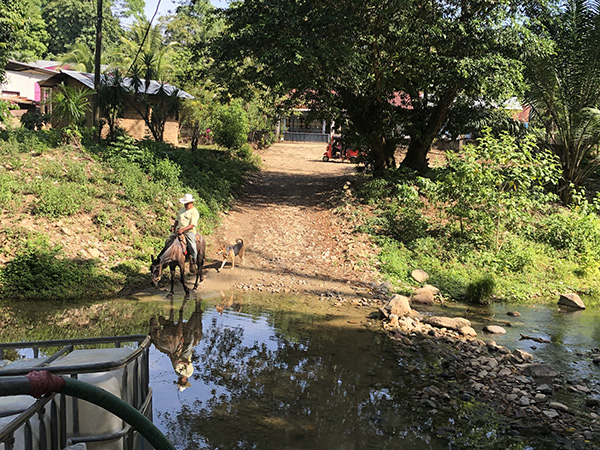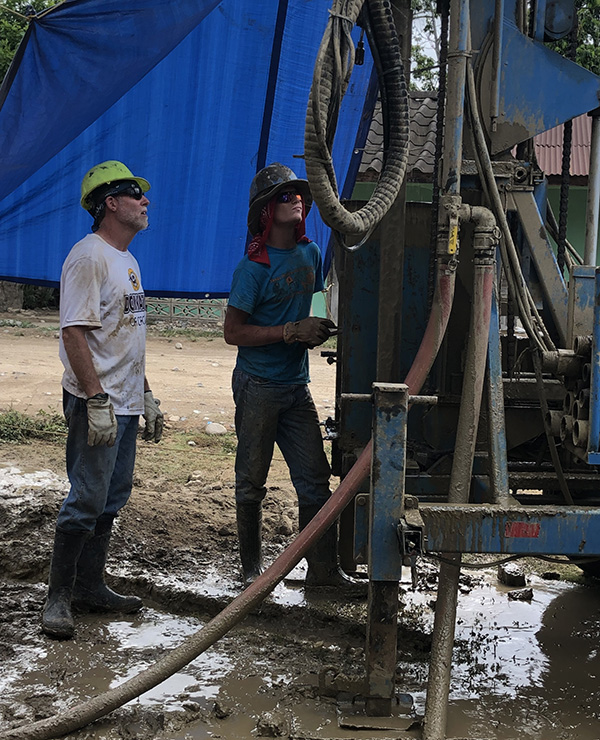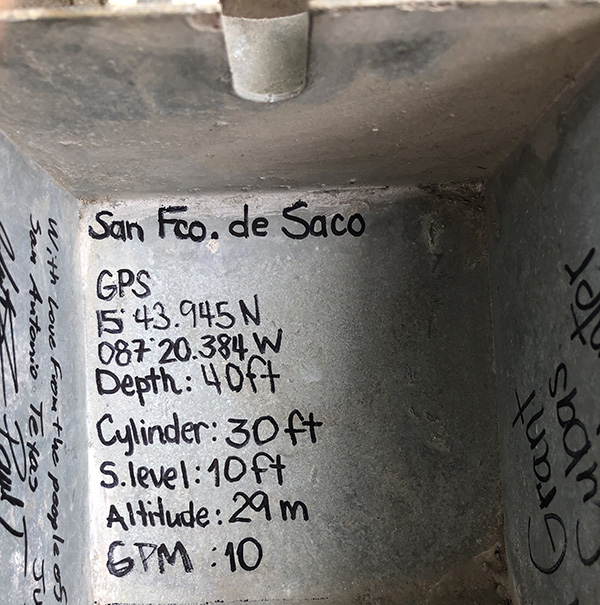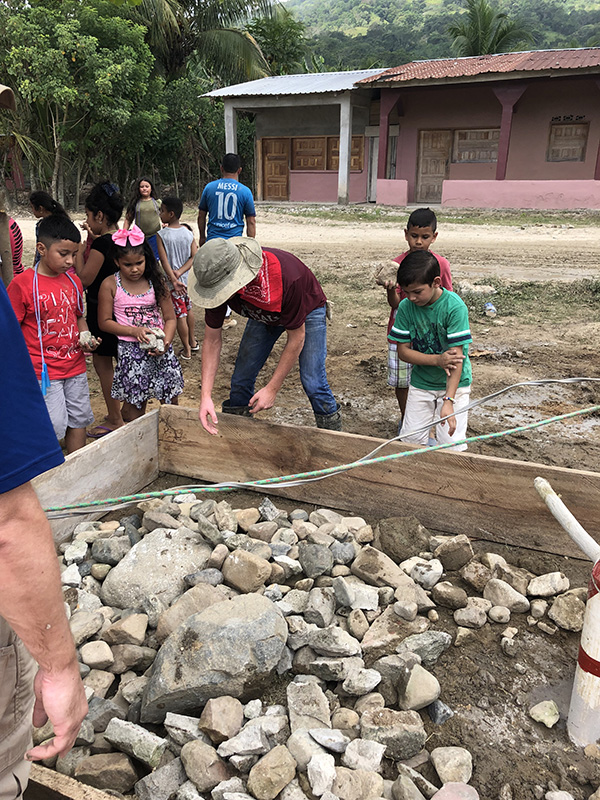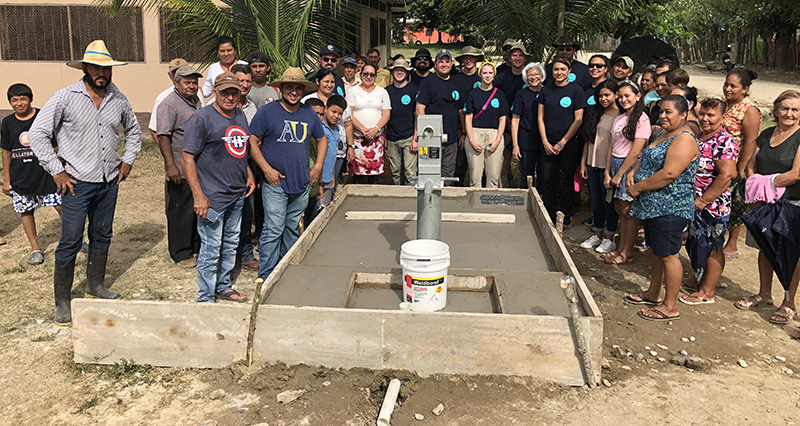In July, 2019, Rick Klar, Vice President - Regional Operations Manager, Geosciences Practice Leader at Raba Kistner, and his son Ben, joined a mission trip that was sponsored by St. Francis of Assisi Catholic Church, and was comprised of a 12-person team of parishioners. The church team worked with Living Waters International (LWI), a non-denominational religious organization, which combines American teams with LWI teams on the ground to take on much needed health and safety projects for areas in many parts of the world.
Living Waters International began working in Honduras in 1998, and receives regular requests from settlements located throughout the country to help drill and construct hygienic water wells for relief from the constant threat of typhoid and malaria caused by residents' shallow unprotected wells, and lack of clean reliable drinking water sources. Residents of small towns and villages have very limited access to reliable water systems and are typically forced to use water from nearby creeks or streams or from shallow wells, both of which sources are typically polluted with high bacterial loads.
In addition to supplying drinking water, the creeks and streams are used by livestock, to supply industrial operations, but also commonly receive stormwater runoff and untreated sewage effluent. Even the major cities in Honduras lack adequate infrastructure to develop and move clean water in addition to basic sanitation. People living in rural communities often have it much worse. As a result, the residents are often forced to buy bottled water, when they can afford it.
Creek near village where poor residents collected drinking water. Rick's team pumped creek water into large containers to use in the water well drilling process.
Rick's team visited the northern part of the country for a week and installed a new water-supply well for a small village called San Francisco de Saco Arizona, which is located about 50 miles outside of the town of San Pedro Sula, Honduras’ 2nd largest City. San Pedro Sula is known as one of the country’s main transport hubs and is the primary industrial center. The village is essentially a working “middle-class” neighborhood with a strong community structure. By Rick's estimation, about half the residents were retired and tending to young children, while the other half traveled daily to surrounding industrial centers to work. He was told that the daily wage for the working middle class is about $20 per day, while the lower-classes subsist on about $2 per day. From the day Rick's team arrived, they were made to feel welcome and treated as visiting dignitaries. While they we were at the village working, the residents provided breakfast, lunch, in addition to mid-morning and afternoon snacks to the team. "I was personally moved by the fact that we were instantly accepted into the community and that people who had so little were willing to share so much with strangers," said Rick.
The 5-day well installation process was extremely difficult and fraught with almost hourly setbacks. The LWI team was equipped with a small trailer-mounted mud-rotary drilling rig capable of drilling to maximum depths on the order of 250 feet or so, assuming soft geologic formations or unconsolidated sediments. Unfortunately for RIck's team, San Francisco de Saco Arizona is located at the foothills of mountains that are comprised of very hard igneous rock. "We learned very quickly during the initial stages of drilling that the large igneous boulders and cobbles were present at the well site below depths about 5 feet of sandy soil cover. It was almost impossible to bore through the igneous rocks using the drilling equipment that we had and our daily drilling progress was measured in inches," said Rick.
To make matters worse, the drill bore was prone to collapse each time they raised the drill bit to clean the hole and remove drill cuttings. Each time the hole collapsed, the team essentially had to re-drill the same footage. "The situation became desperate and almost hopeless near the end of Day 3, when the team blew the primary hydraulic line for the drilling rig and had to shut down operations," said Rick. At this point, Rick's team met with the village leaders to let them know that they might not be able to drill deep enough to hit the shallow water table and set a functional well. Despite their great need for a reliable, clean water source, the residents took this terrible news in stride and thanked the team profusely for our hard work.
The water well specifications were written inside of the pump housing, along with encouraging messages.
At this point, the LWI drilling leader held a team meeting to vote on whether they should abandon the project. Based on discussions with local mechanics, it was determined that the team could harvest a hydraulic line from another portion of the drilling rig and replace the faulty line such that drilling could continue. At this point, the well was only about 20 feet deep and there was no guarantee that the drill would reach deep enough to find shallow groundwater, which was estimated at about 30 feet. The team voted unanimously to re-tool the rig and continue the painstakingly slow drilling process. This was the turning point in the project and almost miraculously, once the rig was back online, they broke through a large igneous boulder and began to make real drilling progress. Rick and his team hit shallow groundwater just below 25 feet and continued drilling to 30 feet for good measure. By the end of Day 4, They were able to successfully extricate the drilling pipe and set well casing for the new well. On Day 5, they returned to the village a final time to complete well installation activities and participate in a well dedication ceremony.
Local children helped gather rocks for the well pad, which was constructed with homemade concrete mixed by hand.
"Although my team's efforts seemed to have been somewhat trivial in consideration of the abject poverty that consumes much of the country of Honduras, I take comfort in the fact that we did improve the lives of a few residents and provided a glimpse of our American culture. By the time we left the well dedication ceremony, the village residents treated us as old friends. Overall it was a great trip and profoundly touched my life. You can’t truly appreciate what you have in the US until you get away and see how others that are far less fortunate struggle to survive," said Rick.
Well dedication ceremony with Rick's team and local residents.














